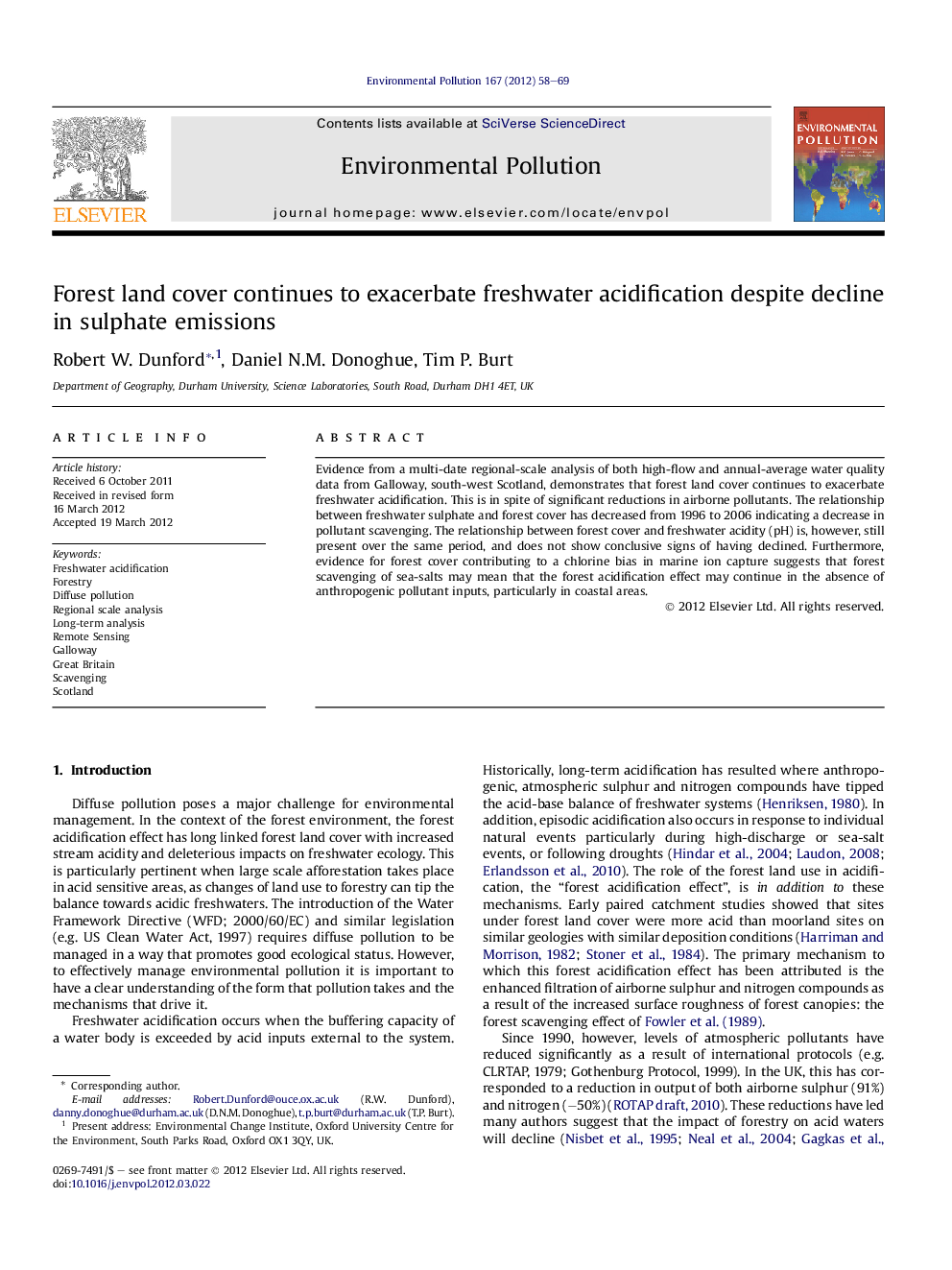| کد مقاله | کد نشریه | سال انتشار | مقاله انگلیسی | نسخه تمام متن |
|---|---|---|---|---|
| 4424553 | 1619205 | 2012 | 12 صفحه PDF | دانلود رایگان |

Evidence from a multi-date regional-scale analysis of both high-flow and annual-average water quality data from Galloway, south-west Scotland, demonstrates that forest land cover continues to exacerbate freshwater acidification. This is in spite of significant reductions in airborne pollutants. The relationship between freshwater sulphate and forest cover has decreased from 1996 to 2006 indicating a decrease in pollutant scavenging. The relationship between forest cover and freshwater acidity (pH) is, however, still present over the same period, and does not show conclusive signs of having declined. Furthermore, evidence for forest cover contributing to a chlorine bias in marine ion capture suggests that forest scavenging of sea-salts may mean that the forest acidification effect may continue in the absence of anthropogenic pollutant inputs, particularly in coastal areas.
► Forest cover and water chemistry remain linked despite decreased sulphate emissions.
► Forest cover has significant relationships SO42−, Cl−, Na+, pH, ANC and Na:Cl ratio.
► Forest cover: pH relationships shows some evidence of decline 1996–2006.
► Forest cover: freshwater sulphate relationships show evidence of decline 1996–2006.
► Natural forest-mechanisms may exacerbate acidification, particularly sea-salt scavenging.
Journal: Environmental Pollution - Volume 167, August 2012, Pages 58–69